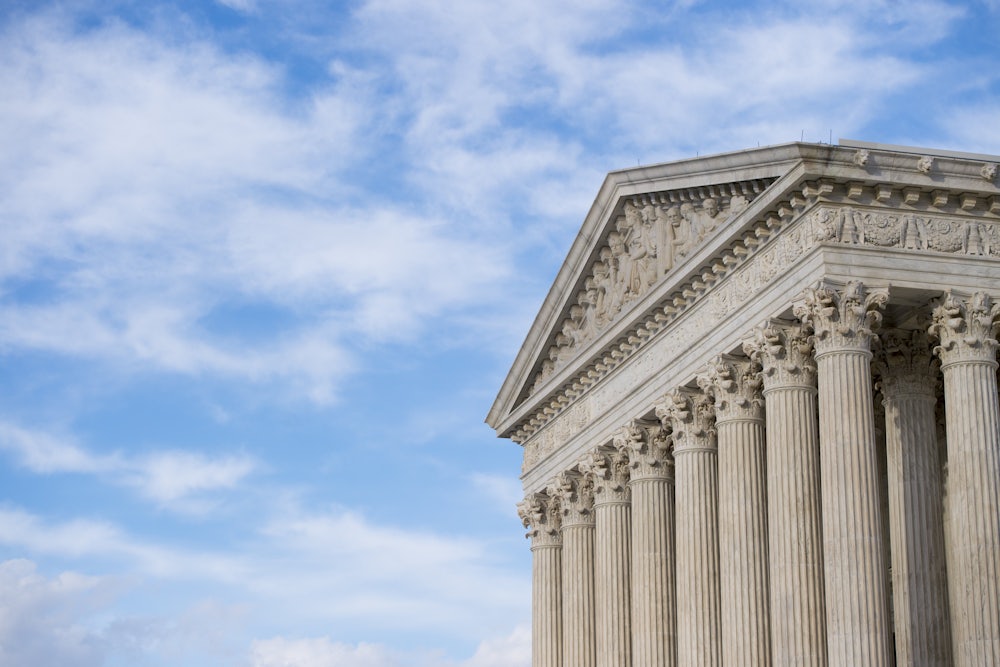America’s founders probably would not have been surprised by former Attorney General Eric Holder’s statement last week that if he were president—though he’s not running—and the Democrats controlled Congress, he would “seriously consider adding two seats to the Supreme Court” to counteract Senate Majority Leader Mitch McConnell’s “power-grabbing antics.” The same goes for a competing proposal from South Bend Mayor Pete Buttigieg, who is running for president, seeking to expand the court to 15 justices. Within 20 years of establishing the new federal government, our early statesmen had changed the size of the Supreme Court three times to ensure that a politically hostile judiciary did not thwart the goals of the party controlling Congress and the presidency.
The Constitution does not entrust to public officials the responsibility to check their own power. The founders assumed that people with political muscle (including judges) would show little self-restraint, and they built a government that would provide each branch with many checks against the others. The Supreme Court was no exception. Rather than leaving the size of the Court in the hands of the justices, or fixing the size for all time, the Constitution grants that power to Congress. As soon-to-be Justice Robert Jackson testified to the Senate Judiciary Committee in 1937, “It was obvious at the founding of the Government that the Court would not always remain of the same size, and that changes in its size would be made, as they have been made, at those times when its decisions caused dissatisfaction.”
Critics of Holder’s remarks, including at The New Republic, argue that if Democrats violate the “norm” of a nine-person court, Republicans will do the same once they return to power. This tit-for-tat allegedly will spell the end to an independent judiciary and our democracy.
Such end-time worries are nothing new. When Congress voted to increase the size of the Court during the Jefferson administration, one newspaper wrote that “the Constitution has received a wound that it will not long survive.” Another lamented: “The independence of the judicial power is prostrated. A judge, instead of holding his position for life, will hold it during the good pleasure of the dominant party. The judges will of course become partisans, and the shadow of justice alone will remain in our courts.” Despite these histrionics, a moment’s reflection on the history of the Court shows that it remained fiercely independent after each of the seven instances in which Congress changed its size. It is difficult to believe that a future expansion of the Court would break this mold.
Far from leading to democratic death spirals, changes to the size of the Court have gone hand in hand with the most vibrant periods of our democracy. The first three changes centered around the political reaction to the “Revolution of 1800,” when Thomas Jefferson and his new political party swept into power. The outgoing Federalist Party, which represented big-money interests, reduced the size of the Court from six to five to keep Jefferson from filling an anticipated vacancy. Once Jefferson’s Democratic-Republican Party was firmly in power, they increased the size back to six justices, then to seven, to allow Jefferson to appoint new justices. Over the next 30 years, Congress denied repeated attempts to expand the Court, but President Andrew Jackson gained sufficient power to add two new justices in 1837.
The final changes to the Court’s size flowed from the upheaval and revitalization of our democracy during the Civil War and Reconstruction. Abraham Lincoln and the Republicans first increased the size to ten to prevent judicial attacks on his war policies. After Lincoln’s assassination, Congress reduced the size to eight to prevent the new president, Andrew Johnson, from harming Congress’ reconstruction efforts. Shortly after assuming the presidency, Ulysses S. Grant and his supporters added a justice to ensure the overturning of a recent Court decision that invalidated the legal tender law that had allowed the government to finance its war efforts. FDR’s failed attempt to pack the Court similarly took place at a time when political and economic elites were being replaced by a new coalition. These were not times of democratic decay, but of rebirth, and leading figures of the day knew that political change could and would be thwarted by the Supreme Court.
We were never intended to be a government by judicial fiat, but the threat has always existed. As Alexis de Tocqueville famously noted, every major political dispute in the United States eventually finds its way into the courts, and courts have the final say in these disputes. Courts can, and have at times, stagnated our government’s ability to respond to critical political and economic issues of the day. That is exactly what is happening today. A Supreme Court majority, sharing a constitutional vision that harkens back to the days when political power was enjoyed by only a landed, male, white aristocracy, is preventing our democratic processes from solving problems that go to the very heart of our democracy. The court’s conservatives stand in the way of our efforts to keep dark money out of politics, to prevent the suppression of the voting rights of people of color, and to solve the polarization that has come with political gerrymandering.
But as the Court’s originalists must acknowledge, it’s no accident that the Constitution grants Congress the right to make the Supreme Court as large or small as it likes. Having the ability to change the composition of the Court in this way ensures that Congress has the power to prevent stagnant visions of our law from threatening the growth of our democracy.
